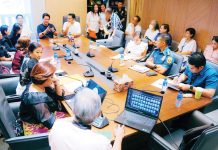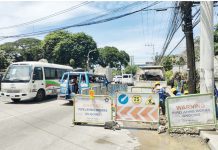ILOILO City – The Department of Health (DOH) in Western Visayas wants to make condoms accessible to students in colleges and universities.
It’s goal is to strengthen the campaign against the spread of the human immunodeficiency virus (HIV) especially among young people between 15 to 24 years old.
HIV causes Acquired Immune Deficiency Syndrome (AIDS), a chronic, potentially life-threatening condition. By damaging the immune system, HIV interferes with the body’s ability to fight organisms that cause diseases.
“We do not promote promiscuity. Our main objective is people’s self-protection from HIV-AIDS and other sexually transmitted infections (STI),” said DOH Region 6’s Adrian Hort Ramos, program coordinator for sexually transmissible infections (STI) and HIV-AIDS.
The 15-to-24 years old age group has the second highest cases of HIV infection in the region (824 cases with 45 deaths out of the 2,946 cumulative cases since 1986), said Ramos.
December last year, DOH erected three pioneering condom stations at the University of the Philippines Visayas (Iloilo City and Miag-ao, Iloilo campuses) and West Visayas State University in La Paz district here.
This Feb. 13, another condom station was launched at the University of Iloilo-PHINMA.
Ramos said establishing the stations should also help counter the stigma associated with condoms.
A “quick survey” conducted among students showed 79 percent favored the initiative, revealed Ramos.
The stations should be considered as “safe spaces” to access condoms, according to Ramos, and clients are encouraged to assess their readiness to avail themselves of and use the commodity.
“Indi kita gusto nga ma-tag nga biskan sin-o lang makakuha sang condom. Ang aton diri sa gihapon is to educate ang makuha sang condom,” he stressed.
In fact, according to Ramos, the Family Planning Organization of the Philippines also has a condom station and even at the DOH regional office itself.
The condom station strategy would be expanded, said Ramos, and DOH-6 expects other institutions to seek the regional office’s help in establishing these in their premises such as but not limited to hotels, motels, lodging houses, and pension houses, even coffee shops.
DOH-6 recently disclosed it would be pressing government-run hospitals across Western Visayas to have testing centers for HIV. The objective is to make people aware of their HIV status, especially those engaged in risqué activities.
“If you belong to that segment of the population with risky behavior, please submit yourself to HIV testing,” said Ramos.
While there is no cure yet to HIV/AIDS, there are medicines that can dramatically slow down the progress of the virus. These antiretroviral drugs have reduced AIDS deaths in many developed nations and DOH gives these out for free.
As of November 2018, the region’s cumulative HIV cases reached 2,946 (since Western Visayas’ first case was recorded in 1986).
By December, the region ranked No. 5 among regions with the highest number of cases.
DOH said one person was diagnosed with HIV every 13 hours in Region 6.
Nationwide as of December 2018, recorded HIV cases reached 62,029 since recording began in 1984.
An average of 32 cases are detected each day./PN





